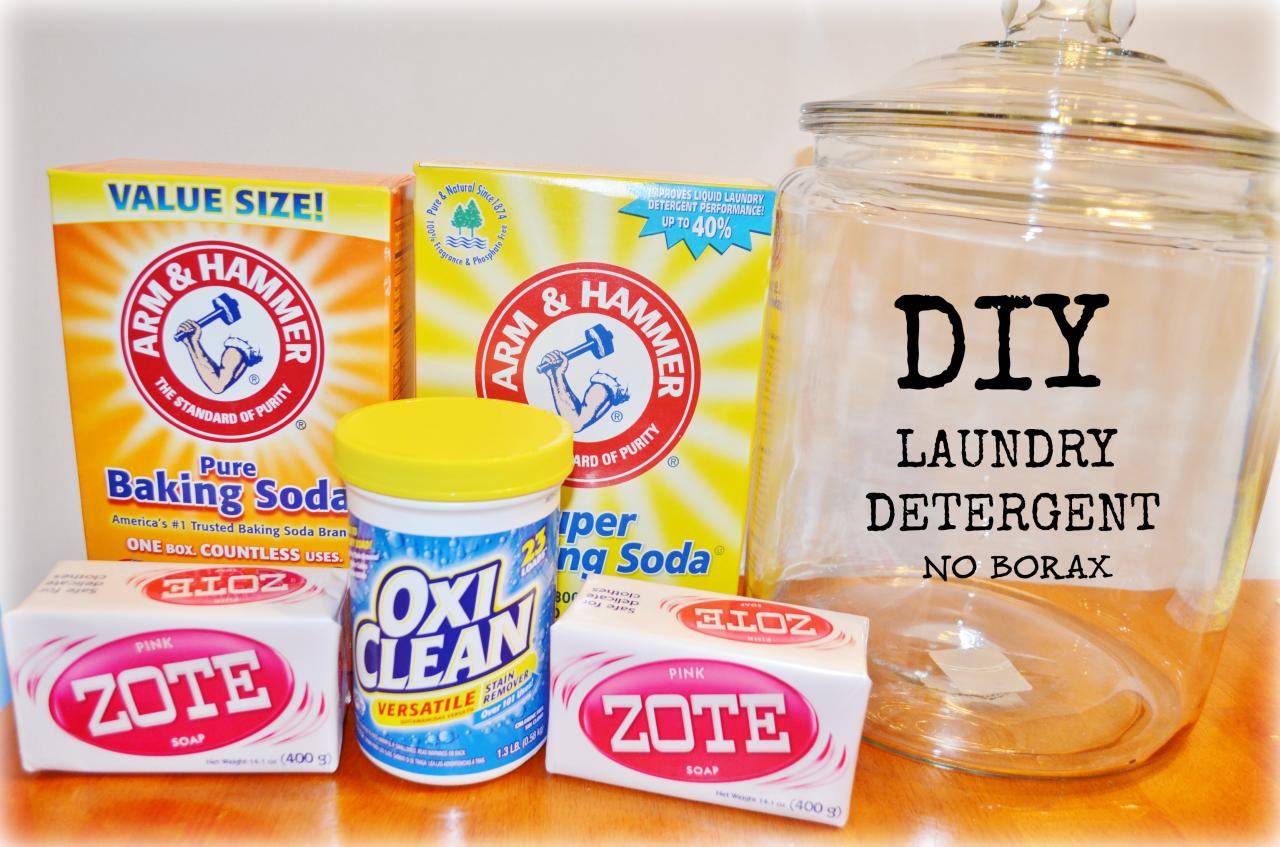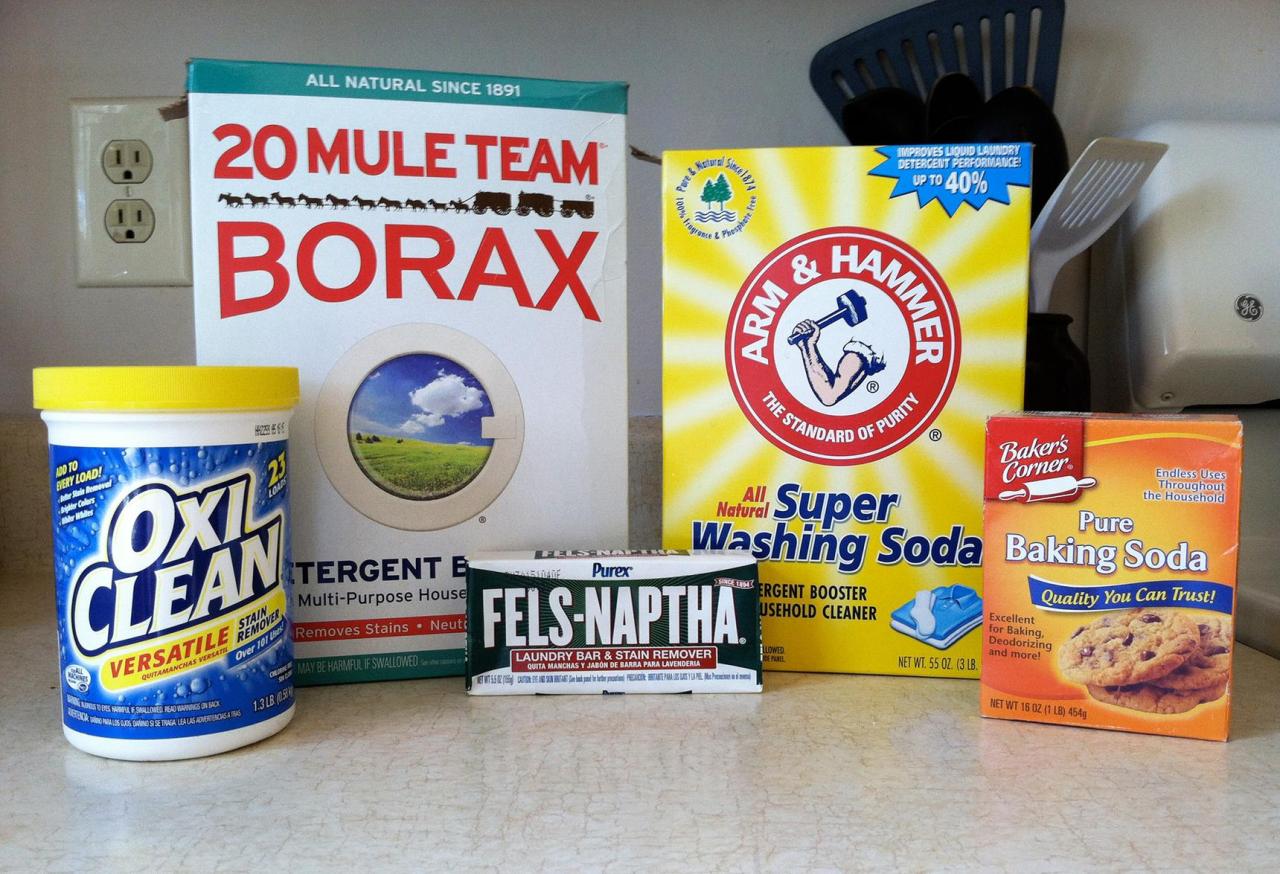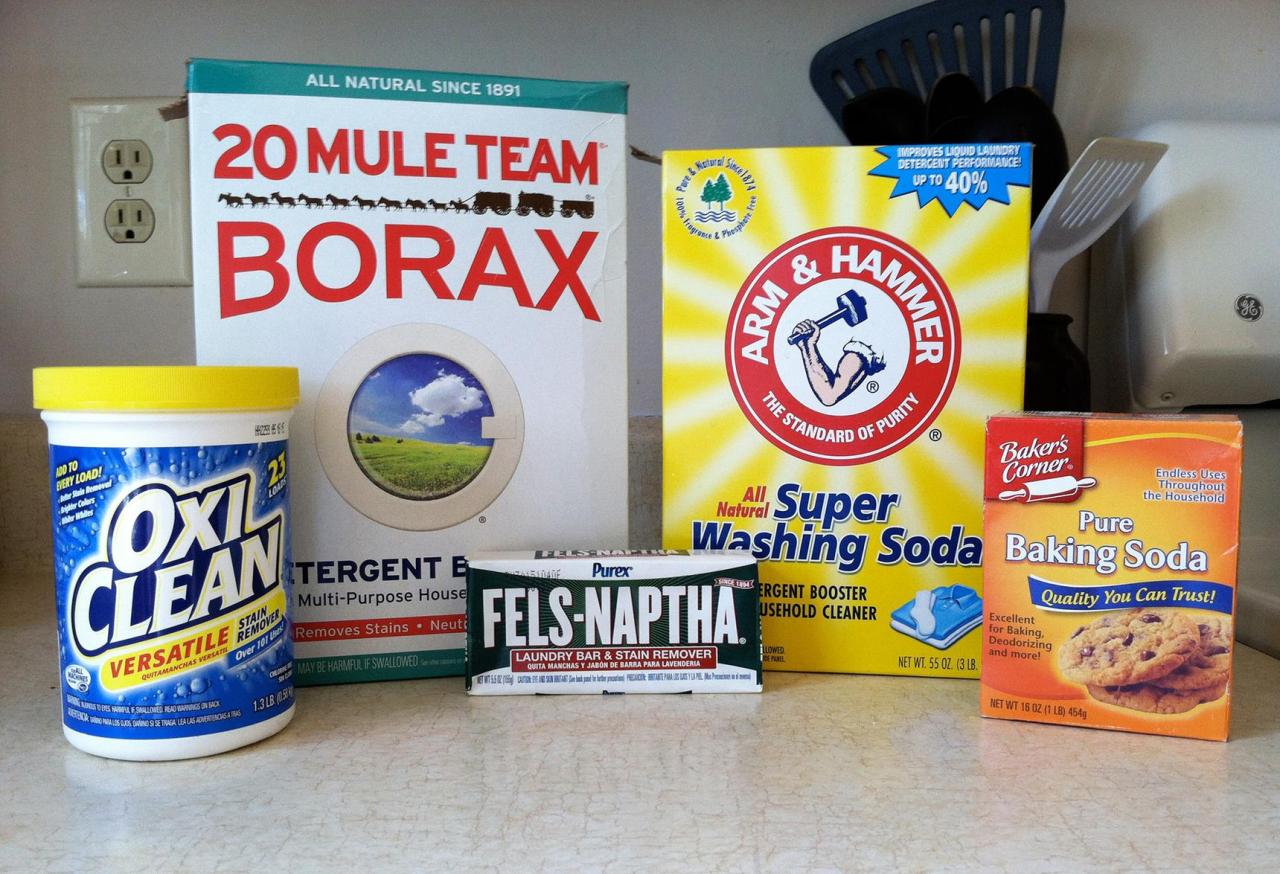DIY laundry detergent offers a fantastic way to save money and reduce your environmental impact. Making your own detergent allows you to control the ingredients and avoid harsh chemicals found in commercial brands. Plus, it’s incredibly easy and rewarding, giving you a sense of accomplishment knowing you’re making a positive change.
This guide will walk you through everything you need to know about DIY laundry detergent, from basic recipes to advanced variations and troubleshooting tips. We’ll cover the benefits, ingredients, safety precautions, and even explore alternative cleaning methods. Get ready to embark on a journey towards cleaner clothes and a greener lifestyle!
Introduction to DIY Laundry Detergent
Creating your own laundry detergent is a rewarding and cost-effective way to clean your clothes while minimizing your environmental impact.
The benefits of making your own laundry detergent are numerous, and many people choose this route over commercial brands for a variety of reasons.
Cost Savings
Making your own laundry detergent can save you a significant amount of money compared to purchasing commercial brands. The ingredients for DIY detergent are generally much cheaper than pre-made detergents, and a single batch can last for several months.
For example, a large box of commercial laundry detergent can cost around $20, while a DIY batch using similar ingredients can cost less than $5. Over time, these savings can add up to a substantial amount of money.
Environmental Benefits
DIY laundry detergent is also more environmentally friendly than commercial brands. Commercial detergents often contain harsh chemicals that can pollute waterways and harm aquatic life.
DIY detergents, on the other hand, are typically made with natural ingredients like soap, baking soda, and borax. These ingredients are biodegradable and do not pose the same environmental risks as their chemical counterparts.
“By switching to DIY laundry detergent, you can significantly reduce your environmental footprint and contribute to a healthier planet.”
Health Benefits
Commercial detergents often contain fragrances and dyes that can irritate sensitive skin. DIY detergents, on the other hand, can be made with natural ingredients that are gentle on the skin. This is especially beneficial for people with allergies or sensitive skin.
Ingredient Control
Another benefit of making your own laundry detergent is that you have complete control over the ingredients. You can choose to use only natural ingredients that you feel comfortable using, and you can avoid any ingredients that you are allergic to or that you simply don’t want to use.
Basic DIY Laundry Detergent Recipes
Creating your own laundry detergent is a great way to save money and control the ingredients in your cleaning products. You can find a variety of recipes online, but we’ll start with two basic recipes to get you started.
Simple DIY Laundry Detergent Recipe
This recipe is easy to make and uses only a few common ingredients.
Ingredients:
* 1 cup grated Fels-Naptha soap
* 1 cup washing soda
* 1/2 cup borax
* 1/2 cup OxiClean (optional)
Instructions:
1. Grate the Fels-Naptha soap using a cheese grater.
2. Combine the grated soap, washing soda, borax, and OxiClean in a large container.
3. Mix the ingredients well.
4. Store the detergent in an airtight container.
5. To use, add 1-2 tablespoons of detergent to each load of laundry.
Advanced DIY Laundry Detergent Recipe
This recipe includes additional ingredients for a more powerful cleaning experience.
Ingredients:
* 1 cup grated Fels-Naptha soap
* 1 cup washing soda
* 1/2 cup borax
* 1/4 cup baking soda
* 1/4 cup citric acid
* 1/4 cup white vinegar
* 1/4 cup distilled water
Instructions:
1. Grate the Fels-Naptha soap using a cheese grater.
2. Combine the grated soap, washing soda, borax, baking soda, citric acid, and white vinegar in a large container.
3. Mix the ingredients well.
4. Add the distilled water and mix again.
5. Store the detergent in an airtight container.
6. To use, add 1-2 tablespoons of detergent to each load of laundry.
Comparison of DIY Laundry Detergent Recipes
Here’s a table comparing the ingredients and properties of the two recipes:
| Ingredient | Simple Recipe | Advanced Recipe | Properties |
|—|—|—|—|
| Fels-Naptha soap | 1 cup | 1 cup | Provides cleaning power and removes stains |
| Washing soda | 1 cup | 1 cup | Boosts cleaning power and softens water |
| Borax | 1/2 cup | 1/2 cup | Whitens clothes and removes odors |
| OxiClean | 1/2 cup (optional) | – | Brightens clothes and removes stains |
| Baking soda | – | 1/4 cup | Deodorizes and softens clothes |
| Citric acid | – | 1/4 cup | Brightens clothes and removes stains |
| White vinegar | – | 1/4 cup | Softens clothes and reduces static cling |
| Distilled water | – | 1/4 cup | Helps to dissolve the ingredients and prevent clumping |
Choosing Ingredients for DIY Detergent
Creating your own laundry detergent is a cost-effective and eco-friendly alternative to store-bought options. The key to a successful DIY detergent lies in understanding the purpose of each ingredient and selecting high-quality options. This section explores the essential ingredients for DIY detergent, their functions, and how to source them.
Washing Soda
Washing soda, also known as sodium carbonate (Na2CO3), is a powerful cleaning agent that helps to soften water and remove dirt and grime. It works by increasing the pH level of the wash water, making it more alkaline. This alkalinity helps to break down grease and oil, as well as neutralize acids in the laundry.
Washing soda is readily available at most grocery stores and online retailers. When purchasing washing soda, look for a pure, unadulterated product. Avoid products that contain additives or fragrances, as these can irritate sensitive skin.
Borax
Borax, also known as sodium borate (Na2B4O7·10H2O), is another essential ingredient in DIY detergent. It acts as a booster, enhancing the cleaning power of washing soda. Borax also has antifungal and antibacterial properties, helping to keep laundry fresh and sanitized.
Borax is typically found in the laundry aisle of most grocery stores or online. Look for a pure borax product without any added fragrances or chemicals.
Soap
Soap is the primary cleaning agent in DIY detergent. It forms a lather that lifts dirt and grime from fabrics. Choose a natural soap that is free from harsh chemicals and fragrances. Popular choices include grated bar soap, soap flakes, or liquid castile soap.
For a gentle detergent, opt for a mild soap like baby soap or a soap specifically designed for sensitive skin. If you want a stronger cleaning power, choose a soap with a higher percentage of olive oil or coconut oil.
Sourcing Ingredients
When sourcing ingredients for DIY detergent, it is crucial to prioritize quality and safety. Look for reputable brands that use natural ingredients and avoid products containing harsh chemicals, fragrances, or dyes.
Here are some tips for sourcing ingredients:
- Grocery stores: Many grocery stores carry washing soda, borax, and soap in their laundry or cleaning aisles.
- Online retailers: Online retailers like Amazon and Etsy offer a wide selection of DIY detergent ingredients, including natural soaps, washing soda, and borax.
- Health food stores: Health food stores often carry natural and organic soap flakes, washing soda, and borax.
- Bulk food stores: Bulk food stores are a good option for buying washing soda and borax in larger quantities.
Using DIY Laundry Detergent Effectively

You’ve created your DIY laundry detergent, now it’s time to use it! Using DIY laundry detergent is simple and can be just as effective as commercial detergents. Here are some tips for getting the most out of your homemade laundry solution.
Using DIY Laundry Detergent in a Washing Machine
Using DIY laundry detergent in your washing machine is straightforward. Most washing machines are designed to work with liquid detergents, so simply pour the appropriate amount of your DIY detergent into the dispenser drawer.
Determining the Right Amount of Detergent
The amount of DIY detergent you need per load will vary depending on several factors, including the size of your laundry load, the hardness of your water, and the concentration of your detergent.
It’s generally a good idea to start with a smaller amount of detergent and gradually increase it if necessary. If you’re using a high-efficiency (HE) washing machine, use less detergent than you would for a standard machine.
Water Hardness
Hard water contains a high concentration of minerals, which can make it difficult for detergent to lather and clean effectively. If you have hard water, you may need to use more detergent to achieve the same cleaning results.
Laundry Size
The size of your laundry load will also affect the amount of detergent you need. A larger load will require more detergent than a smaller load.
Storing and Maintaining DIY Laundry Detergent
To maintain the effectiveness and freshness of your DIY laundry detergent, it’s essential to store it properly. Store your detergent in an airtight container in a cool, dry place.
If you’re using a recipe that includes borax, store it separately from other ingredients, as borax can be harmful if ingested. Always keep DIY laundry detergent out of reach of children and pets.
DIY Laundry Detergent Alternatives

While homemade laundry detergent recipes are popular, there are other natural and effective alternatives to consider. These alternatives often rely on readily available ingredients and offer a gentler approach to cleaning your clothes.
Soap Nuts
Soap nuts are the dried fruit of the soapberry tree, which contain natural saponins that create a soapy lather when mixed with water. They are a completely biodegradable and non-toxic option for laundry.
- How Soap Nuts Work: Soap nuts contain saponins, which are natural surfactants that break down dirt and grime. When soaked in water, they release these saponins, creating a soapy solution that cleans clothes effectively.
- Using Soap Nuts: To use soap nuts, simply place a few in a reusable laundry bag and add them to your washing machine with your clothes. The number of soap nuts needed depends on the size of the load and the level of soiling.
- Benefits of Soap Nuts: Soap nuts are a sustainable and environmentally friendly alternative to commercial detergents. They are biodegradable, hypoallergenic, and gentle on sensitive skin. They are also effective in removing dirt and stains, especially for lightly soiled laundry.
- Limitations of Soap Nuts: Soap nuts may not be as effective for heavily soiled laundry or for removing stubborn stains. They may also not be suitable for all types of washing machines, particularly high-efficiency models.
Vinegar
White vinegar is a versatile household product that can be used for various cleaning purposes, including laundry. It is a natural fabric softener and deodorizer, and it can also help to remove dirt and grime.
- How Vinegar Works: Vinegar is acidic, which helps to break down dirt and grime. It also helps to neutralize odors and soften fabrics.
- Using Vinegar: Add 1/2 cup of white vinegar to the rinse cycle of your washing machine. You can also use vinegar to pre-treat stains by soaking the stained area in a vinegar solution before washing.
- Benefits of Vinegar: Vinegar is a safe and effective alternative to commercial fabric softeners. It is also a natural deodorizer and can help to brighten clothes. It is readily available and inexpensive.
- Limitations of Vinegar: Vinegar can be too acidic for some fabrics, especially delicate ones. It may also not be effective for removing all types of stains.
Comparison of Alternatives
| Alternative | Pros | Cons |
|---|---|---|
| Soap Nuts | Biodegradable, hypoallergenic, gentle on skin, effective for lightly soiled laundry | May not be effective for heavily soiled laundry or stubborn stains, may not be suitable for all washing machines |
| Vinegar | Natural fabric softener, deodorizer, helps remove dirt and grime, readily available, inexpensive | Can be too acidic for some fabrics, may not be effective for all types of stains |
DIY Laundry Detergent: Troubleshooting and Tips
DIY laundry detergent can be a great way to save money and reduce your environmental impact. However, it’s important to know how to troubleshoot common problems and make the most of your homemade detergent.
Troubleshooting Common Issues
Troubleshooting common issues with DIY laundry detergent can be a simple matter of adjusting your recipe or technique. Here are some tips for addressing common problems:
- Residue buildup: If you notice residue buildup on your clothes, it’s likely due to using too much detergent or using a detergent that’s not dissolving properly. Reduce the amount of detergent you use or try dissolving the detergent in hot water before adding it to the washing machine. You can also add a cup of white vinegar to the rinse cycle to help remove any residue.
- Lack of cleaning power: If your clothes aren’t getting clean, you may not be using enough detergent or your recipe may not be strong enough. Increase the amount of detergent you use or try a different recipe that uses more cleaning agents. You can also try adding a tablespoon of borax to your wash load for extra cleaning power.
- Greying of clothes: If your clothes are turning grey, it could be due to a buildup of dirt and grime, hard water, or using too much detergent. Try using a pre-wash cycle to loosen dirt and grime before washing. You can also add a cup of white vinegar to the rinse cycle to help remove any residue. If you have hard water, you may need to use a water softener or add a cup of baking soda to your wash load.
Tips for Making the Most of DIY Laundry Detergent
Here are some tips for getting the most out of your homemade laundry detergent:
- Use a pre-wash cycle: This can help loosen dirt and grime before washing, making it easier for the detergent to work.
- Add a fabric softener: If you like the feel of fabric softener, you can add it to the rinse cycle.
- Use a laundry booster: For tough stains, you can add a laundry booster to your wash load.
- Store your detergent properly: Keep your detergent in an airtight container in a cool, dry place.
Adapting DIY Laundry Detergent for Specific Needs
DIY laundry detergent can be adapted to meet specific laundry needs. Here are some tips for customizing your detergent:
- Removing stains: For tough stains, you can add a tablespoon of borax or baking soda to your wash load. You can also pre-treat stains with a mixture of baking soda and water.
- Dealing with sensitive skin: If you have sensitive skin, you can use a milder detergent recipe or add a cup of white vinegar to the rinse cycle to help neutralize any remaining detergent.
- Washing delicates: For delicates, use a gentle detergent recipe and wash on a delicate cycle. You can also hand wash delicates in a sink with a mild detergent.
Final Review
By making your own laundry detergent, you can enjoy the satisfaction of crafting a product that’s good for your clothes, your wallet, and the environment. With a little effort and a few simple ingredients, you can create a cleaning solution that’s both effective and eco-friendly. So why not give it a try? You might just be surprised at how easy and rewarding it is to make the switch to DIY laundry detergent.
